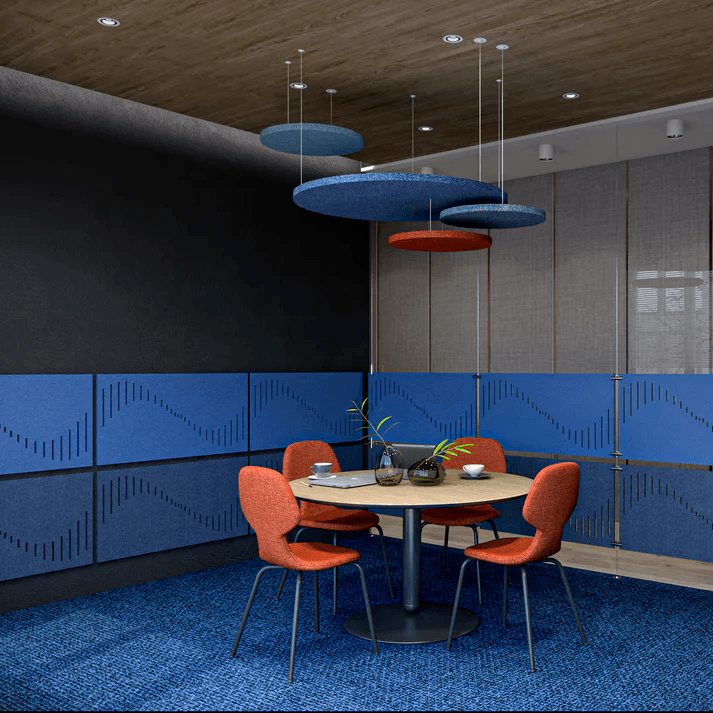How can you best use sound absorbers?
Using sound absorbers correctly is crucial to creating a comfortable and balanced sound environment. Whether in an office, restaurant, recording studio, or home, sound absorbers help reduce reverberation and dampen sound reflections. By placing and using them strategically, you can effectively reduce disturbing noise levels and improve the acoustics in the room.
How does a sound absorber work?
Sound absorbers are designed to capture and reduce sound waves that would otherwise be reflected off hard surfaces. When sound hits materials such as concrete, glass, or tile, it bounces back and creates a long reverberation time. This results in a noisy and unbalanced sound environment. By placing sound absorbers where sound waves are reflected the most, you can absorb the sound and thus reduce echoes and disruptive background noise.
Strategic placement for best effect
To achieve the best possible results, it is important to identify where the sound reflections are greatest. By installing sound absorbers in the right places, you can create a more controlled and harmonious sound environment.
What type of sound absorber should you choose?
The choice of sound absorber depends on the type of sound you want to dampen.
For high-frequency sounds
Porous materials such as acoustic foam, polyester fiber, and fabric-covered panels are most effective.
For low-frequency sounds
Bass traps and thicker absorbers are required to absorb long sound waves.
For general sound dampening
Combine different materials and thicknesses to achieve a well-balanced sound environment.
Combine sound absorbers with other acoustic measures
To create an optimal sound environment, it is not always enough to use sound absorbers alone. Other acoustic measures can enhance the effect:
- Carpets and textiles help to further dampen sound.
- Furniture can be used to break up sound waves and prevent sound propagation.
- Heavy curtains can reduce sound reflections from windows.
Create a harmonious sound environment
By strategically placing sound absorbers and choosing the right materials, you can effectively reduce noise levels and improve the acoustics in the room. Whether you want to create a more productive working environment, improve speech intelligibility in a conference room, or reduce noise in your home, sound absorbers are a crucial solution. By combining the right placement, choice of materials, and complementary acoustic measures, you can create a balanced and pleasant sound environment.






